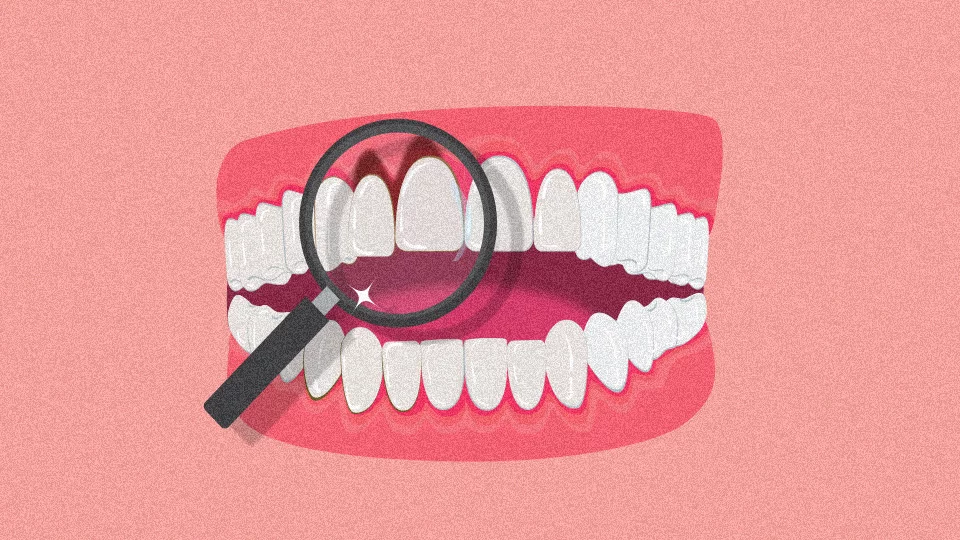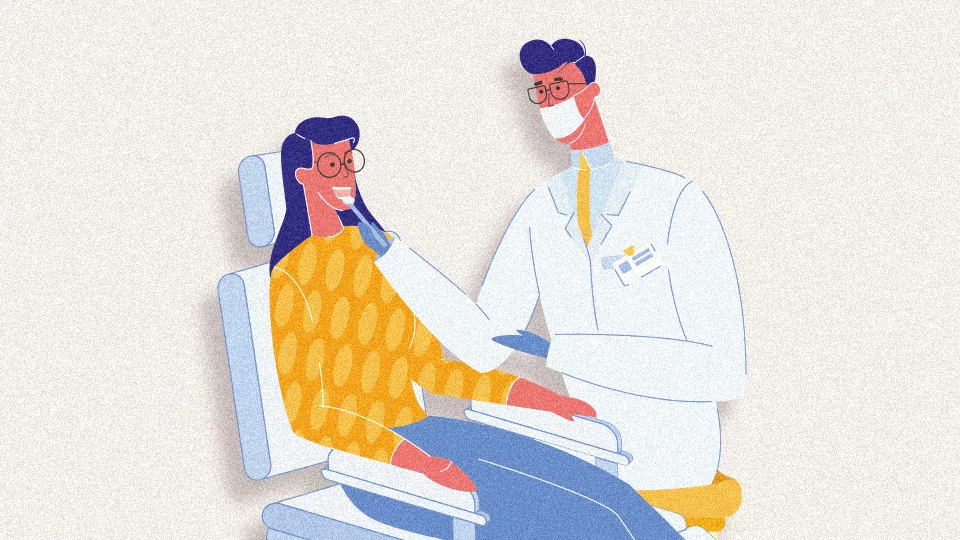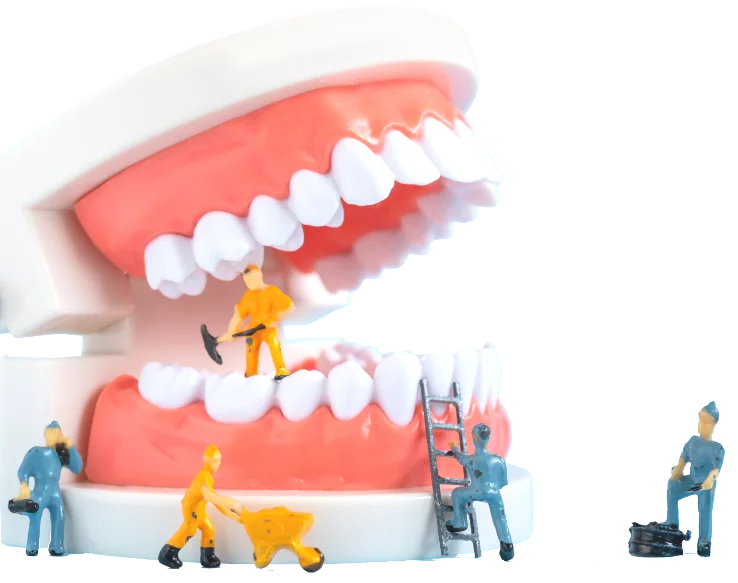If you have damaged or receding gums due to gum disease or aggressive brushing, your dentist may recommend a gum graft surgery to repair your gums. A gum graft procedure takes healthy gum tissue from the roof of your mouth or a tissue bank and attaches it over the receding gums. This allows the new tissue to replace your worn-away gums, protecting your exposed tooth roots.

Poor oral hygiene leads to an accumulation of hardened plaque on your teeth that harbor bacteria, which is the leading cause of gum recession.
Gingival Recession Surgery
Gum disease can wreak havoc on your mouth, leading to loss of teeth, inflamed gums, and receding gums. If you have noticed that your teeth are looking longer than normal, you may be suffering from gum recession. This occurs when the gums pull back away from the teeth, revealing more and more of the roots of your teeth.
To correct gum recession, periodontists, dentists who specialize in gum disease, will protect the exposed root by performing a gum recession surgery, also known as a gingival recession surgery. Periodontists essentially create a new gum line with the tissue graft after thoroughly clearing the plaque and bacteria that may be present. Stitches are necessary to keep the graft in place until the gum graft fully heals.
How Long Does a Gum Graft Last?
After your gum graft heals in a week or two, you should be able to fully brush and floss your teeth like normal. In some cases, it may take up to a month before sensitivity to hot and cold drinks subsides.
Once your gum graft is fully healed and your stitches are removed, a huge benefit of having gum graft surgery is that it is considered a permanent solution to gum recession. However, it is important to maintain good oral hygiene to prevent gum disease from causing your gums to recede in other places in your mouth. This includes brushing your teeth twice daily, flossing, and scheduling regular appointments with your dentist.
If you are wondering when is it too late for gum grafting, the answer is that it is never too late to have the procedure. If you have gum tissue that can be used for the gum graft, your gums can be improved through this procedure. However, the more advanced the gum disease, the lower the success rate of the gum graft surgery.
How Much Is a Gum Graft?
Depending on the reason you are seeking gum graft surgery, the cost of the procedure could be significantly affected. While periodontal disease may deem a gum graft surgery necessary to eradicate the gum disease, some people with healthy gums may elect to have the procedure for cosmetic reasons. If you are wondering if gum grafting is covered by insurance, the answer is that it greatly depends on whether the procedure is medically necessary for the health of your mouth.
How much does a gum graft cost? The average cost of gingival recession surgery is between $600 - $1200 per tooth. Dental insurance may pay for all or a portion of your gum graft surgery if recommended by your dentist for the overall health of your mouth, depending on your coverage.
Additional costs during a gum grafting procedure include gum contouring if you want the gum line trimmed for aesthetic reasons. The cost can be an additional $400 - $1800, and likely will not be covered by insurance.
Financing Options
Whether or not you have dental insurance covering a portion of your gum grafting surgery, other ways exist to help make the cost more affordable.
Dental discount plans: Individual dental offices may offer a way for you to access incredible discounts on routine or necessary procedures. You can use these discounts to close the gap between what your insurance pays and your out-of-pocket costs.
Dental credit card: With a soft credit check, you can see if you qualify for a dental credit card that allows you to charge your dental costs so you can be sure that you can get the dental care you need.
Payment plans: Dental offices may also offer payment plans that break up large dental bills into more affordable monthly payments. If you can not pay for your gum grafting surgery all at once, payment plans can give you a predictable monthly bill until the total is paid off.
Is Gum Grafting Painful?
During a gum graft procedure, the treatment site will be numbed with topical anesthesia so you won’t feel any pain. But as the anesthesia wears off, it is possible for a varying degree of soreness and pain to be present. If you had tissue taken from the roof of your mouth to be used for the gum grafting surgery, you would have an additional wound that could cause discomfort during the healing process.
The First Two Weeks Post Surgery
As your mouth heals, the pain and sensitivity will lessen greatly over the first week or two. But to avoid opening up wounds or preventing the graft from successfully adhering to your gums, a few things to remember are:
Only eat soft foods. You do not want crunchy or cumbersome foods to damage your gum graft or re-open the stitches.
To reduce the pain in the first few days after surgery, you can take an over-the-counter painkiller, or you may be prescribed a pain reliever.
Your dentist may recommend a salt water rinse or other antibacterial rinse four to five times a day for the first two weeks after surgery to keep the site clean.
You should not brush near the graft site for the first week. It is fine to brush all other teeth, but be careful not to get your toothbrush near the treatment site.
During the second week after surgery, use a soft-bristled toothbrush to clean the tooth at the treatment site. You can use your regular toothbrush for the rest of your mouth.
You will likely be prescribed an antibiotic to prevent infection.
Ten days to two weeks after the procedure, your dentist will have a follow-up appointment to check for healing and to remove stitches.
Are Gum Grafts Worth It?

While a gum graft procedure requires recovery time and some pain or discomfort, the procedure is highly effective. When the roots of your teeth are left exposed, it could lead to tooth decay or tooth loss and allow untreated gum disease to spread.
By following your dentist’s recommendation to have a gum graft procedure, you are protecting your gums and teeth from further damage, as well as preventing daily discomfort from hot and cold sensitivity in your mouth.
While healing after surgery isn’t your favorite way to spend a couple of weeks, the benefits of having a healthy mouth after a needed gum graft surgery are well worth it.
Find a Periodontist in Your Community
The right periodontist in your community can also make the entire process even easier. To find a periodontist near you, check out Smile Generation’s Find a Dentist and make an appointment today.
Find your trusted, local dentist today!
Smile Generation blog articles are reviewed by a licensed dental professional before publishing. However, we present this information for educational purposes only with the intent to promote readers’ understanding of oral health and oral healthcare treatment options and technology. We do not intend for our blog content to substitute for professional dental care and clinical advice, diagnosis, or treatment planning provided by a licensed dental professional. Smile Generation always recommends seeking the advice of a dentist, physician, or other licensed healthcare professional for a dental or medical condition or treatment.
Sources
"Gum Tissue Graft Cost." Cost Helper, 14 Nov. 2023, https://health.costhelper.com/gum-tissue-grafts.html
Mythri, Sarpangala, Suryanarayan Maiya Arunkumar, Shashikanth Hegde, Shanker Kashyap Rajesh,Mohamed Munaz, and Devasya Ashwin, "Etiology and Occurrence of Gingival Recession - An Epidemiological Study." NIH, Dec. 2015, https://www.ncbi.nlm.nih.gov/pmc/articles/PMC4753713/








